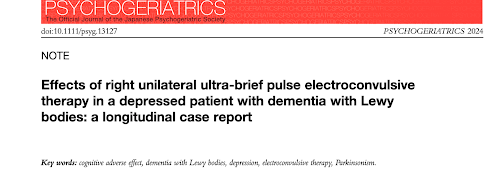Retrospective Study on Suicide/Suicidal Ideation During Depression: Treatment Data (Including ECT) From China

Out on PubMed, from researchers in China, is this study: Real-world evidence from a retrospective study on suicide during depression: clinical characteristics, treatment patterns and disease burden. Wang H, Lyu N, Huang J, Fu B, Shang L, Yang F, Zhao Q, Wang G. BMC Psychiatry. 2024 Apr 19;24(1):300. doi: 10.1186/s12888-024-05726-y. PMID: 38641767 The abstract is copied below: Background: Suicide stands as both a primary symptom and the direst outcome of major depressive disorder (MDD). The scarcity of effective treatment strategies makes managing MDD patients with suicide especially challenging. Hence, it is crucial to investigate disease characteristics and efficacious therapeutic strategies for these patients, drawing insights from disease databases and real-world data. Methods: In this retrospective study, MDD patients hospitalized between January 2013 and December 2020 were investigated using Electronic Health Records (EHR) data from Beijing Anding Hospital. The study en...











